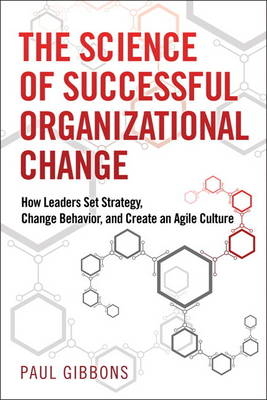
The Science of Successful Organizational Change
Pearson FT Press (Verlag)
978-0-13-400033-6 (ISBN)
- Titel ist leider vergriffen;
keine Neuauflage - Artikel merken
Change management, ostensibly the craft of making change happen, is rife with myth, pseudoscience, and flawed ideas from pop psychology. In Gibbons’ view, change management should be “euthanized” and replaced with change agile businesses, with change leaders at every level. To achieve that, business education and leadership training in organizations needs to become more accountable for real results, not just participant satisfaction (the “edutainment” culture).
Twenty-first century change leaders need to focus less on project results, more on creating agile cultures and businesses full of staff who have “get to” rather than “have to” attitudes. To do that, change leaders will have to leave behind the old paradigm of “carrots and sticks,” both of which destroy engagement.
“New analytics” offer more data-driven approaches to decision making, but present a host of people challenges—where petabyte information flows meet traditional decision-making structures. These approaches will have to be complemented with “leading with science”—that is, using evidence-based management to inform strategy and policy decisions.
In The Science of Successful Organizational Change, you'll learn:
How the VUCA (Volatile, Uncertain, Complex, and Ambiguous) world affects the scale and pace of change in today’s businesses
How understanding of flaws in human decision-making can help leaders guide their teams toward wiser strategic decisions when the stakes are largest—including “when to trust your guy and when to trust a model” and “when all of us are smarter than one of us”
How new advances in neuroscience have altered best practices in influencing colleagues; negotiating with partners; engaging followers' hearts, minds, and behaviors; and managing resistance
How leading organizations are making use of the science of mindfulness to create agile learners and agile cultures
How new ideas from analytics, forecasting, and risk are humbling those who thought they knew the future–and how the human side of analytics and the psychology of risk are paradoxically more important in this technologically enabled world
What complexity theory means for decision-making in the context of your own business
How to create resilient and agile business cultures and anti-fragile, dynamic business structures
To link science with your "on-the-ground" reality, Gibbons tells “warts and all” stories from his twenty-plus years consulting to top teams and at the largest businesses in the world. You'll find case studies from well-known companies like IBM and Shell and CEO interviews from Nokia and Barclays Bank.
Paul Gibbons has a 35-year career straddling international business and academia. His research and writing explores how philosophy and science can be used to enlighten contemporary business thinking and solve practical business problems, including changing culture, developing leaders, and using analytics and evidence to make strategic decisions. During his 30 years in Europe, he was a derivatives trader, consultant, adjunct professor, and founder/CEO of an award-winning Organization Development consulting firm, Future Considerations. He now writes, teaches, and raises two boys in Colorado.
Introduction 1
Chapter 1: Failed Change: The Greatest Preventable Cost to Business? 17
PART I: Change-Agility 37
Chapter 2: From Change Fragility to Change-Agility 41
PART II: Change Strategy 71
Chapter 3: Governance and the Psychology of Risk 77
Chapter 4: Decision Making in Complex and Ambiguous Environments 103
Chapter 5: Cognitive Biases and Failed Strategies 123
PART III: Change Tactics 157
Chapter 6: Misunderstanding Human Behavior 161
Chapter 7: The Science of Changing Behaviors 189
Chapter 8: The Science of Changing Hearts and Minds 221
Chapter 9: Leading with Science 255
Bibliography 293
Index 302
| Erscheint lt. Verlag | 5.6.2015 |
|---|---|
| Verlagsort | NJ |
| Sprache | englisch |
| Maße | 159 x 236 mm |
| Gewicht | 604 g |
| Themenwelt | Schulbuch / Wörterbuch |
| Informatik ► Office Programme ► Outlook | |
| Wirtschaft ► Betriebswirtschaft / Management ► Planung / Organisation | |
| Wirtschaft ► Betriebswirtschaft / Management ► Unternehmensführung / Management | |
| ISBN-10 | 0-13-400033-1 / 0134000331 |
| ISBN-13 | 978-0-13-400033-6 / 9780134000336 |
| Zustand | Neuware |
| Haben Sie eine Frage zum Produkt? |
aus dem Bereich


